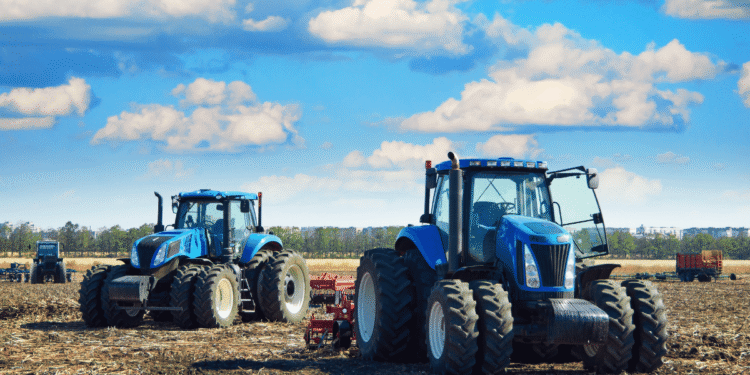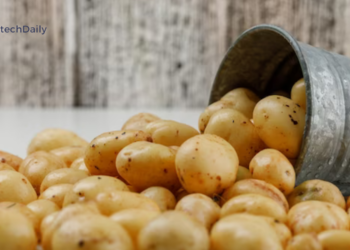In the vast and dynamic tapestry of agriculture, the role of technology has emerged as a defining force, reshaping the landscape of cultivation and transforming the way we envision the traditional image of a farmer toiling in the fields. At the heart of this agricultural revolution lies the intricate machinery that has become synonymous with modern farming.
From the humble plow to the sophisticated tractors and harvesters, agricultural machinery has transcended its utilitarian roots to become the driving force behind increased efficiency, enhanced productivity, and sustainable farming practices. This article embarks on a journey through the fields of innovation, exploring the evolution and impact of agricultural machinery as it continues to sow the seeds of progress in the fertile soils of agriculture.
Need of Farming Equipments
Farming equipment plays a crucial role in Indian agriculture, contributing to increased productivity, reduced labor costs, and improved crop yields. The adoption of modern agricultural machinery has transformed the sector, bringing about advancements in various aspects of farming practices.
Enhancing Productivity and Efficiency
Farming equipment, particularly tractors and power tillers, has significantly improved productivity by reducing the time and effort required for land preparation, sowing, and harvesting. Mechanization allows farmers to cover larger areas of land more efficiently, leading to increased crop production.
Reducing Labor Costs and Dependency
The use of farming equipment has helped reduce the reliance on manual labor, addressing the shortage of farmworkers and mitigating the challenges associated with traditional farming methods. Mechanization enables farmers to perform tasks more efficiently, reducing labor costs and improving overall farm profitability.
Improving Crop Yields and Quality
Modern farming equipment incorporates precision technologies that allow for accurate seed placement, fertilizer application, and irrigation management. This precision farming approach contributes to improved crop yields, enhanced crop quality, and reduced resource wastage.
Addressing Post-Harvest Losses
Mechanization in post-harvest handling and processing has helped minimize losses and improve the quality of agricultural produce. Threshers, dryers, and sorting machines ensure efficient harvesting, processing, and storage, reducing losses and preserving crop quality.
Promoting Sustainable Agriculture Practices
Several farming equipment options are designed to promote sustainable agriculture practices. For instance, precision irrigation systems optimize water usage, while minimum tillage techniques conserve soil health and reduce environmental impact.
Empowering Marginal and Smallholder Farmers
Access to affordable and appropriate farming equipment can significantly empower marginal and smallholder farmers, enabling them to enhance their productivity and profitability. Government initiatives and financial support mechanisms play a key role in promoting mechanization among these farmers.
Overall, farming equipment has revolutionized Indian agriculture, contributing to increased food production, improved farmer livelihoods, and enhanced sustainability in the sector. The adoption of modern agricultural machinery continues to drive advancements in farming practices, ensuring India’s position as a global leader in agriculture.
Embracing Tradition
In many parts of rural India, traditional farming methods still hold sway. These age-old practices passed down through generations, showcase the resilience and resourcefulness of Indian farmers. While these methods might seem rudimentary in comparison to modern machinery, they are deeply rooted in the local ecosystems and have been fine-tuned to maximize efficiency and sustainability.
- Ploughs and Oxen
The image of oxen pulling a wooden plough through the fields is an iconic representation of Indian agriculture. The traditional wooden plough, known as the “khalbatta,” is simple yet effective for tilling the soil. Oxen, revered as faithful partners in the fields, provide the power to turn the soil and prepare it for sowing.
- Sickles and Scythes
For centuries, Indian farmers have relied on sickles and scythes for harvesting crops like wheat, rice, and millets. The rhythmic sound of the sickle slicing through the stalks is a timeless melody that resonates across the countryside during harvest season.
- Winnowing Fans
Winnowing, the process of separating grains from chaff, is an art passed down through generations. Winnowing fans, known as “khalais,” are used to toss harvested grains into the air, allowing the wind to carry away the lightweight chaff while the heavier grains fall back onto the threshing floor.
Harnessing Technology

As India strives to feed its burgeoning population and improve agricultural productivity, technology has taken centre stage. Modern farming equipment has begun to transform the way agriculture is practised, increasing efficiency, reducing labor, and optimizing resource use.
- Tractors
Tractors have become an essential part of Indian agriculture, enabling farmers to plough, cultivate, and transport heavy loads with ease. These workhorses are found in fields across the country, from the remote villages to the sprawling plains. Indian manufacturers have also made significant contributions to the tractor industry, producing models tailored to local needs and conditions.
- Combined Harvesters
Mechanized harvesting has gained traction, particularly for rice and wheat crops. Combined harvesters, which simultaneously cut, thresh, and clean the crops, have revolutionized the harvesting process. They not only save time but also reduce post-harvest losses.
- Drip Irrigation Systems
In regions with water scarcity, drip irrigation systems have emerged as game-changers. By delivering water directly to the roots of plants, these systems conserve water and improve the efficiency of irrigation. They are especially well-suited for cash crops like fruits and vegetables.
- Power Tillers
Power tillers, compact machines that combine the functions of a plough and a tractor, are well-suited for small and marginal farmers. They provide an affordable solution for mechanized farming, allowing farmers to save labour and time.
- Crop Residue Management Equipment:
With the aim of addressing air pollution caused by crop residue burning, machines like the “Happy Seeder” have been introduced. These machines sow seeds directly into the soil while simultaneously managing crop residue, reducing the need for burning.
Balancing Tradition and Progress
As India navigates the path between tradition and progress, the coexistence of old and new farming equipment is a testament to the adaptability of its agricultural community. The diversity of landscapes, climate, and crops has led to a patchwork of farming practices that vary from region to region. While some areas embrace cutting-edge technology, others find value in preserving traditional knowledge.
- Customization for Local Needs:
One of the most remarkable aspects of farming equipment in India is the customization to local needs. From adapting machinery for different soil types to modifying tools to suit the specific crops grown in an area, Indian farmers and manufacturers have showcased their ingenuity in tailoring equipment to the demands of diverse agroecosystems.
- Empowerment of Small Farmers:
A significant portion of Indian farmers are smallholders with limited resources. The introduction of smaller and affordable machinery, like power tillers and mini tractors, empowers these farmers to mechanize their operations, reduce drudgery, and enhance productivity.
- Training and Capacity Building:
As advanced machinery enters rural landscapes, the importance of training and capacity building becomes paramount. Farmers need to understand not only how to operate these machines but also how to maintain and repair them. Government initiatives and non-governmental organizations play a crucial role in providing training and support.
The diverse array of farming equipment used in India reflects the complex tapestry of its agriculture. From the nostalgic sight of oxen pulling a plough to the hum of a modern tractor working the fields, these tools bear witness to the evolution of Indian agriculture. As the country strides forward, seeking sustainable solutions to feed its growing population, the harmony between tradition and technology will continue to be the driving force behind its agricultural progress. In this blend of the old and the new, the resilience and spirit of Indian farmers shine brightly, illuminating a path towards a more prosperous and sustainable future.











